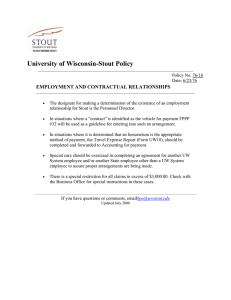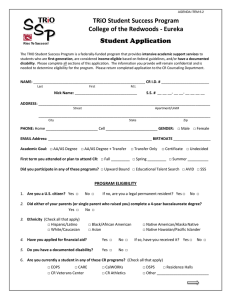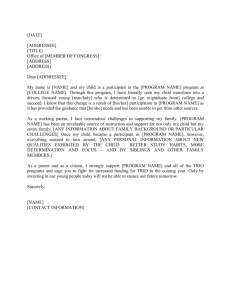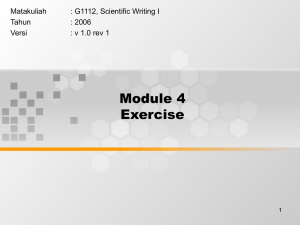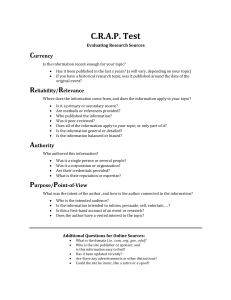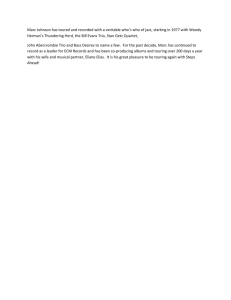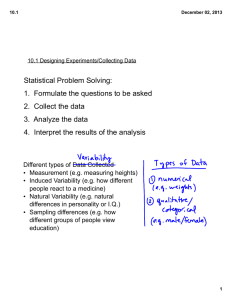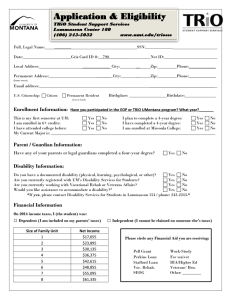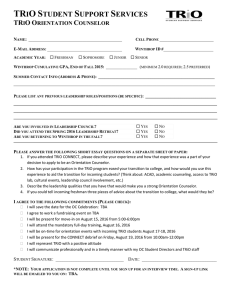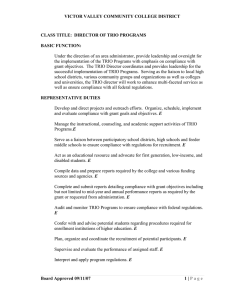Criteria for Evaluating Web Sources
advertisement
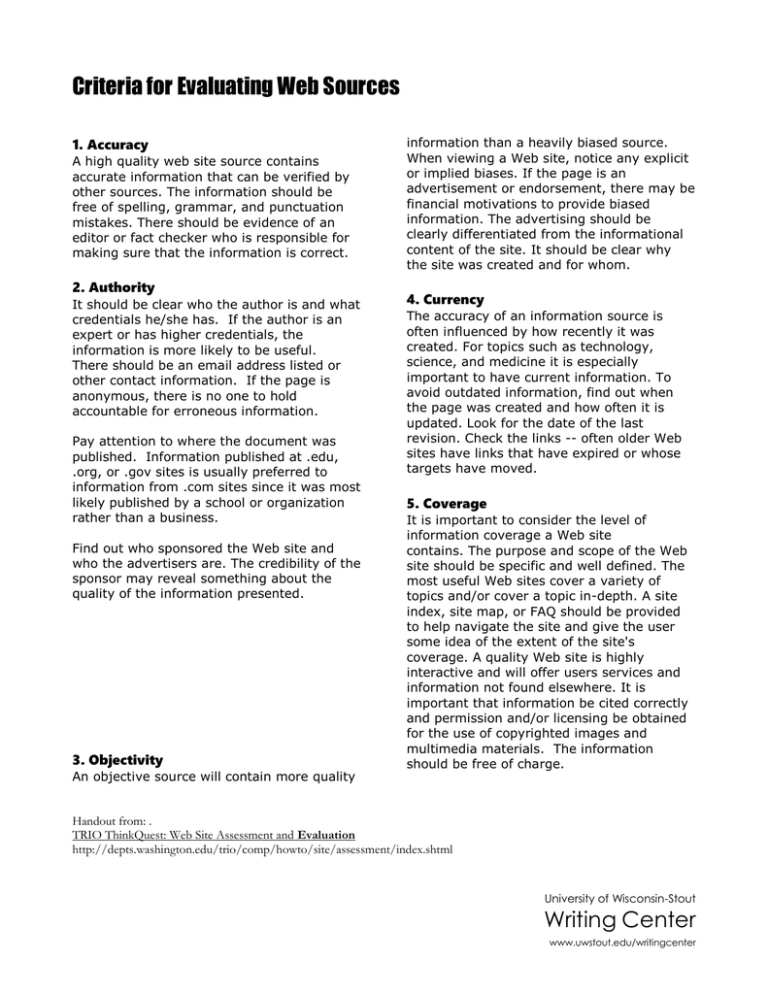
Criteria for Evaluating Web Sources 1. Accuracy A high quality web site source contains accurate information that can be verified by other sources. The information should be free of spelling, grammar, and punctuation mistakes. There should be evidence of an editor or fact checker who is responsible for making sure that the information is correct. 2. Authority It should be clear who the author is and what credentials he/she has. If the author is an expert or has higher credentials, the information is more likely to be useful. There should be an email address listed or other contact information. If the page is anonymous, there is no one to hold accountable for erroneous information. Pay attention to where the document was published. Information published at .edu, .org, or .gov sites is usually preferred to information from .com sites since it was most likely published by a school or organization rather than a business. Find out who sponsored the Web site and who the advertisers are. The credibility of the sponsor may reveal something about the quality of the information presented. 3. Objectivity An objective source will contain more quality information than a heavily biased source. When viewing a Web site, notice any explicit or implied biases. If the page is an advertisement or endorsement, there may be financial motivations to provide biased information. The advertising should be clearly differentiated from the informational content of the site. It should be clear why the site was created and for whom. 4. Currency The accuracy of an information source is often influenced by how recently it was created. For topics such as technology, science, and medicine it is especially important to have current information. To avoid outdated information, find out when the page was created and how often it is updated. Look for the date of the last revision. Check the links -- often older Web sites have links that have expired or whose targets have moved. 5. Coverage It is important to consider the level of information coverage a Web site contains. The purpose and scope of the Web site should be specific and well defined. The most useful Web sites cover a variety of topics and/or cover a topic in-depth. A site index, site map, or FAQ should be provided to help navigate the site and give the user some idea of the extent of the site's coverage. A quality Web site is highly interactive and will offer users services and information not found elsewhere. It is important that information be cited correctly and permission and/or licensing be obtained for the use of copyrighted images and multimedia materials. The information should be free of charge. Handout from: . TRIO ThinkQuest: Web Site Assessment and Evaluation http://depts.washington.edu/trio/comp/howto/site/assessment/index.shtml University of Wisconsin-Stout Writing Center www.uwstout.edu/writingcenter
